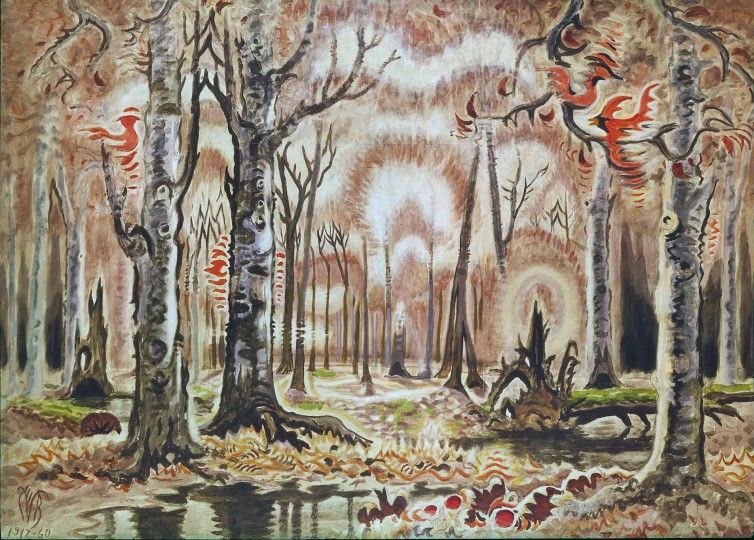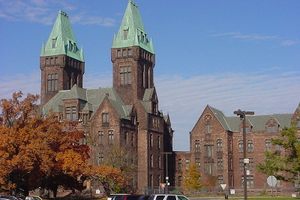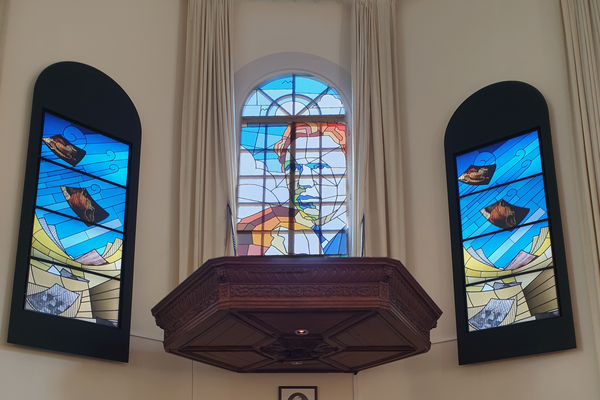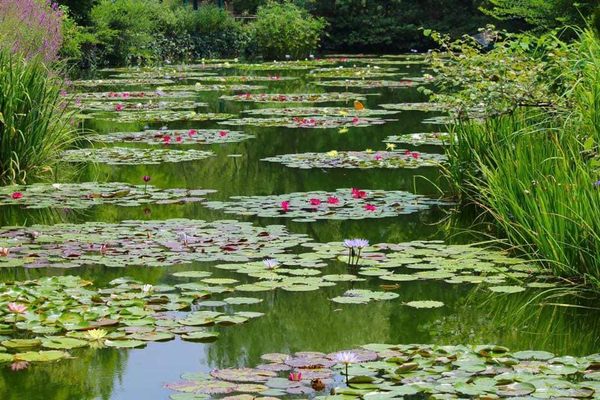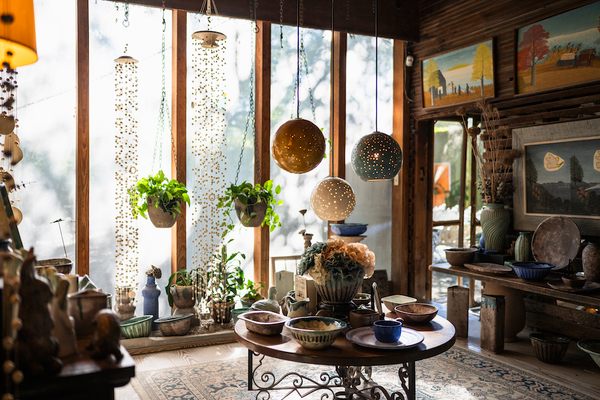About
Tucked in a corner of an exhibit, itself tucked in an unobtrusive corner of the Burchfield Penney Art Center, is a rock. An otherwise unremarkable sedimentary concretion, this rock has the distinction of being personally selected by artist Charles Burchfield to adorn his Gardenville studio in West Seneca, a suburb of Buffalo, New York. In his diary from 1937, Burchfield describes a jaunt through the woodlands along Cazenovia Creek where he collected stones and flowers, and it is believed that this is one of those stones which now sits in a recreation of Burchfield’s studio in the museum.
The stone is a septarian nodule, a name derived from the Latin septum, meaning partition, and it is widely believed to have metaphysical properties—a fitting talisman for an artist whose works are frequently described as fantastical, hallucinatory, and transcendental. Among those with lapidary predilections, septarian is regarded as a protective stone that engenders happiness and understanding. It also allegedly helps the possessor improve communication skills making this a truly talented bit of gravel.
Charles Burchfield (1893–1967) began his career as a wallpaper designer but eventually gained notoriety as a gifted watercolorist. He drew inspiration from the contrasting environs of the natural world on the one hand and Buffalo’s streets and industrial districts on the other. His ethereal style as a regional realist garnered praise from many contemporaries including the painter Edward Hopper. Critic Jerry Saltz has described Burchfield as "the mystic, cryptic painter of transcendental landscapes, trees with telekinetic halos, and haunted houses emanating ectoplasmic auras." Perhaps the rock had more influence than anyone suspected.
Today, the largest collection of Burchfieldiana resides in the Burchfield Penney Art Center, although more than 100 museums in the U.S. exhibit his paintings, including MoMA, the Met, and the Whitney. Life magazine once counted him as one of America’s 10 greatest artists, and when he died he was even eulogized by President Lyndon B. Johnson. To say that his reputation is rock-solid would be an understatement.
Related Tags
Community Contributors
Added By
Published
October 4, 2022
Sources
- https://subscribe.buffalonews.com/e/limit-reached-bn?returnURL=https://buffalonews.com/news/the-scared-woods-charles-burchfields-spiritual-quest-on-canvas/article_f7a82442-7f0c-5fa2-9a20-bd58e3327d84.html
- https://burchfieldpenney.org/exhibitions/exhibition:12-19-2011-12-19-2016-charles-e-burchfield-s-gardenville-studio/
- https://burchfieldpenney.org/art-and-artists/artwork/object:l2010-001-044-sun-and-rocks/
- https://buffalonews.com/news/check-it-out/article_9e9d929b-8f39-5181-8ea3-3d1b29438f84.html







